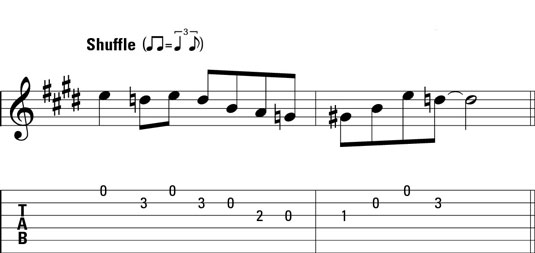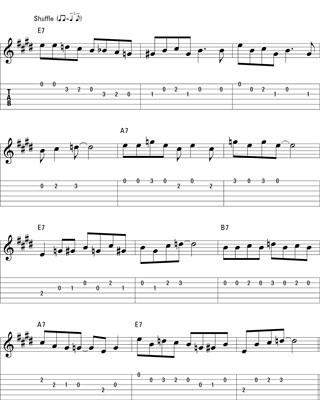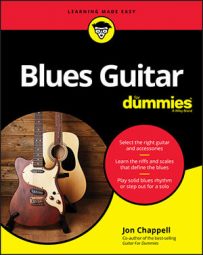In blues, rock, and jazz guitar, there are times when you want to add extra interest to the blues harmony. You can do this by adding a sweet note — an extra chromatic note not found in the six-note blues scale. When you want to spice things up a bit, there are a few sweet notes you can work with.
In the case of the major third of a chord, it’s a very defining sound in swing and Texas blues and is often nicknamed the sweet note. This figure shows a passage using E blues-scale notes along with the occasional G#. Here, G immediately precedes the G# and is a classic blues move that’s encouraged!

The principles applied in matching up the notes of the blues scale with the major third of the I chord also apply to the IV chord, A. The notes of an A major triad are A, C#, and E. The notes A and E (the one and the five of the chord) are already in the E blues scale (E, G, A, Bb, B, D). The major third, C#, is a half step away from the D in the scale. So the C# adds a half-step-away alternative for the blues-scale D that clashes with the A-chord C#. Plus, the C# sounds so good against the E chord anyway, so it’s doubly supported as a sweet note.
Another sweet note is the major sixth of the I chord (C# in the key of E). In Texas-style blues, it’s quite common to hear the major third and the major sixth used in conjunction with each other. The following passage is typical of leads that use the sixth (C#); the major third (G#) is also included.

Click here to download and print this guitar tab.
Other chord tones appear in lead guitar passages, but the major third and sixth (which does double duty as the major third in the IV chord) are the most important notes to incorporate after you master the blues scale. These added sweet notes will help you break out of the proverbial box so that you don’t have to rely on just the blues scale — or any scale — to play from your heart. The entire musical alphabet can be your palette.

